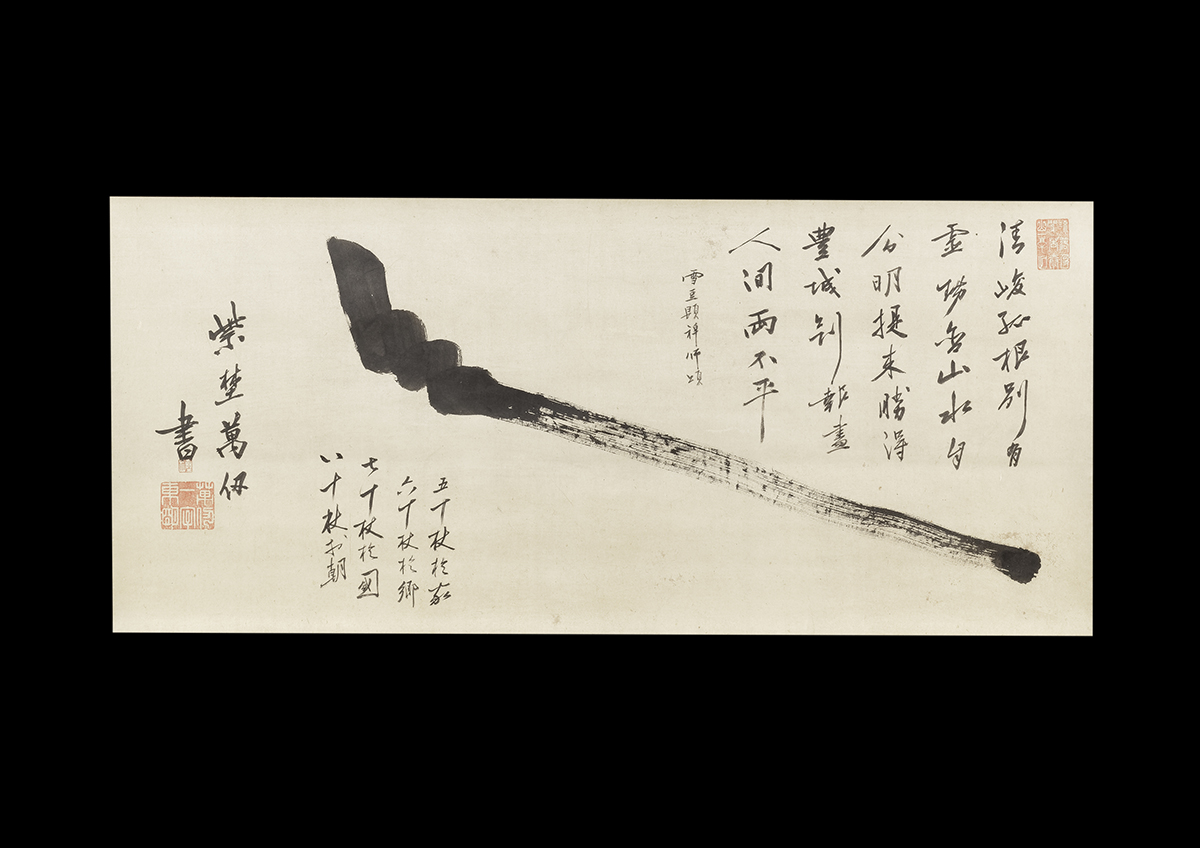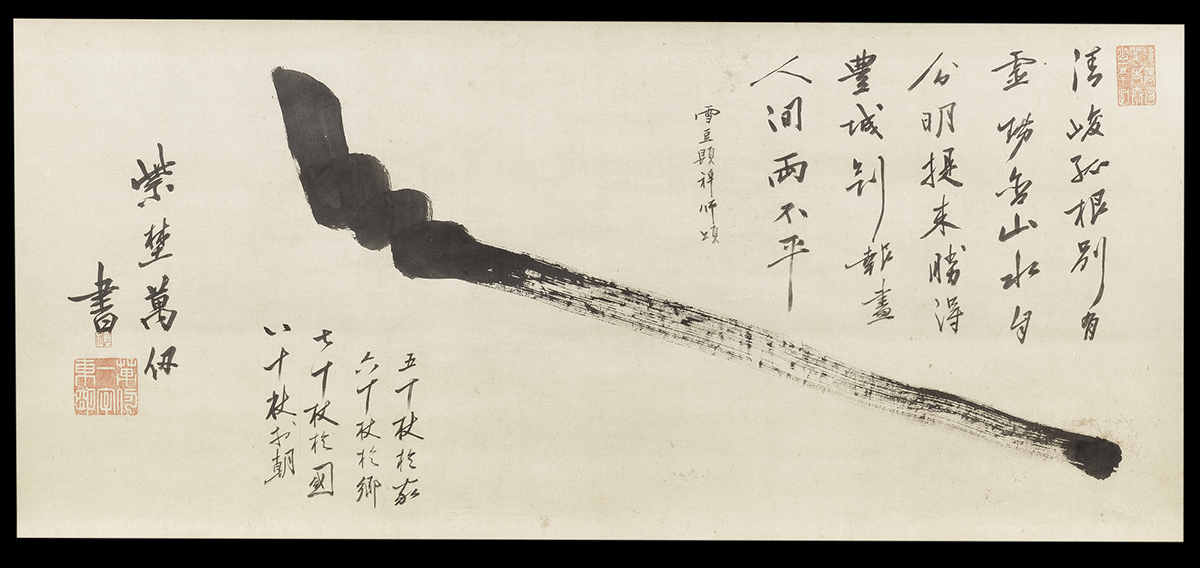Stick
Banjin Sōtai / Paintings
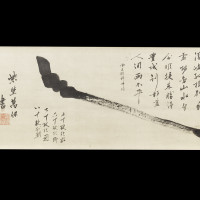
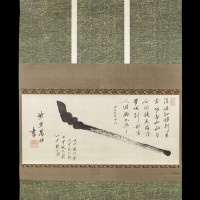
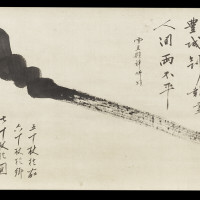
- Contact Us
-
Material
Ink on paper
-
Size
168 cm x 124 cm - 120 cm x 55 cm
-
Period
Edo, 18th century, ca. 1750
-
Box
Double Awasebako (collector wooden boxes)
Description
Huge Stick by Murasakino Banjin (Banjin Sōtai)
Banjin-Sōtai (18th century) vigorously painted a full-sized stick on a big paper with one stroke without hesitation.
This painting is full of graceful decisiveness.
The motif is a stick which is an important tool for the Zen sect of Buddhism.
Many famous Zen priests painted the stick as a motif.
The Zen priests used a stick when they went on a walking pilgrimage.
It was used to help walking, but also used for sounding the depth of river or groping around when they went into the trackless paths.
And it was also used when they preached sermon on depicting Ensō or beating the disciples for training.
The stick is an important image of training.
There is no end of training for the Zen priest, and because of that, the stick is an important tool for them.
That is why so many priests took it as a motif of Zen paintings.
Banjin Sōtai was an important Zen priest of the Rinzai School in the middle Edo period.
He was the chief priest of the Tokuzen-ji temple which is one of the sub-temples of Daitoku-ji temple in Kyoto. He revived the Settsuhannya-ji temple. He learned from Yōshinsōkin (?-1704) who was the 264th chef of the Daitoku-ji.
He added the poem of Secchō-Jyūken (980-1052), a Chinese Zen priest of the Northern Song dynasty of China who rejuvenated the Unmon sect.
He excelled at poem and it is said that his poem “Shōko hyakusoku”
influenced a lot to the history of Zen.
清峻孤根別有霊
勢含山水自分明
提来勝得豊城剣
報盡人間両不平
雪竇顕禅師頌
Even a root has a soul
Everything itself grasp the world and life
If you have a sword as the legendary sword of Fengcheng
You can judge definitely good and evil
Secchō Ken
五十杖於家
六十杖於郷
七十杖於國
八十杖於朝
紫埜萬仞書
Stick is a home in age of 50 years old
Stick is a hometown in age of 60 years old
Stick is a country in age of 70 years old
Stick is the tomorrow in age of 80 years old
Written by Murasakino (nickname of Daitoku-ji temple) Banjin
